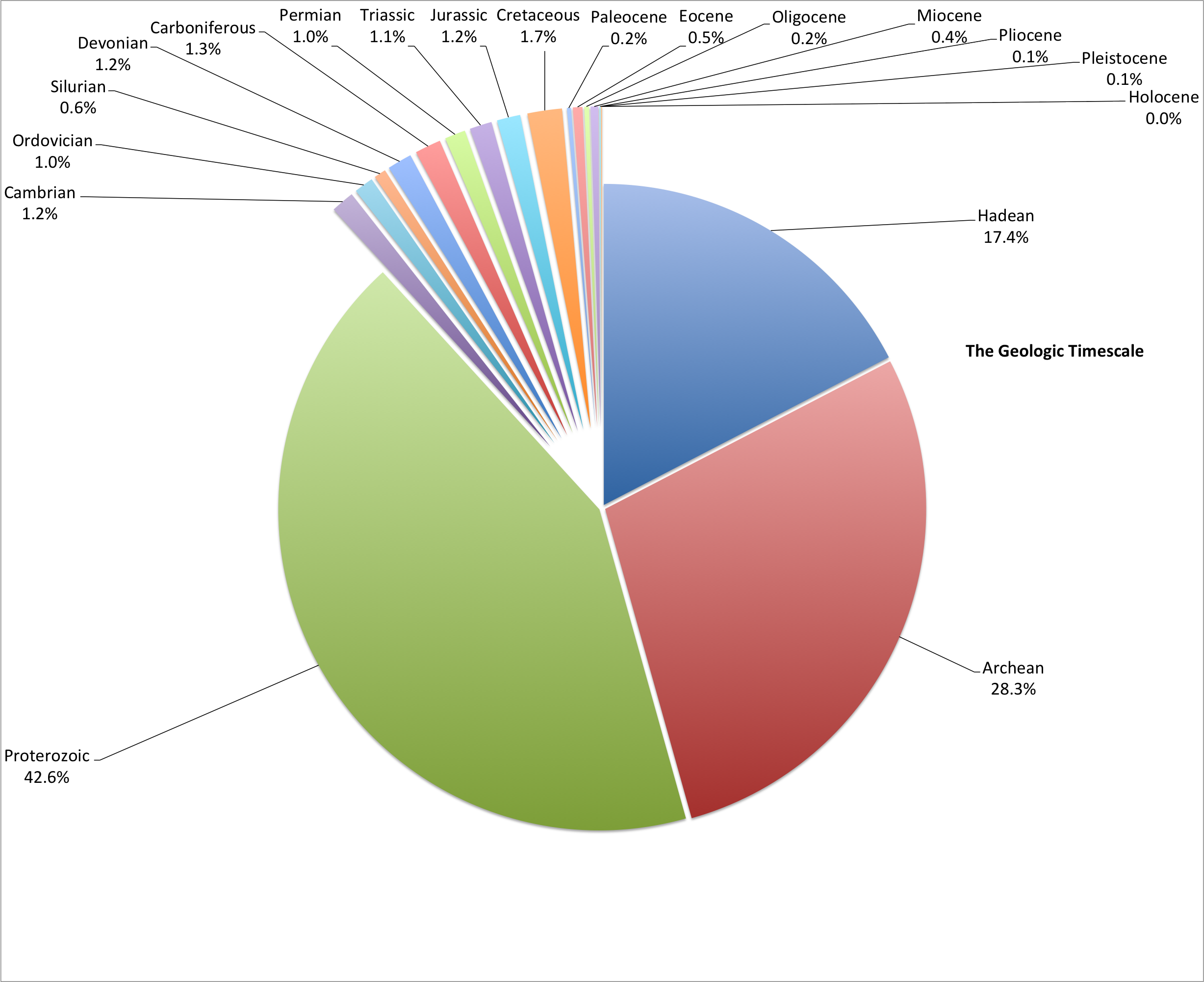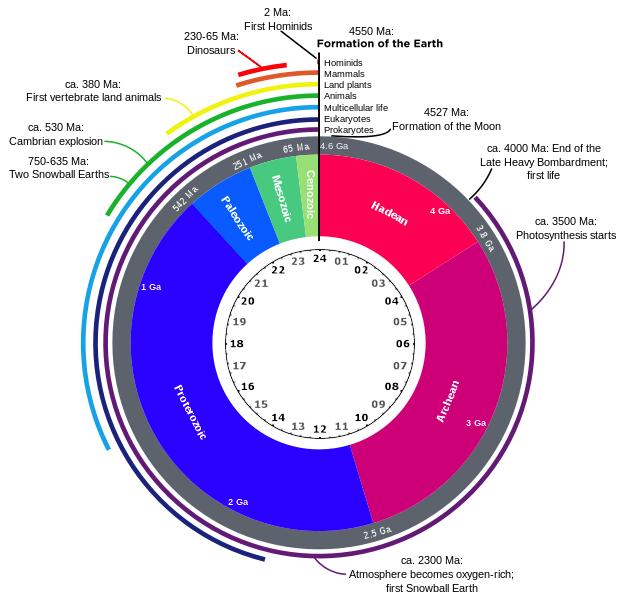The Earth is estimated to have formed about 4.6 billion (4600 million) years ago, and yet by 3.9 billion years ago, only shortly after the molten planet solidified, the oceans formed, and the asteroid bombardment ceased, there is evidence of the first primitive life. Only in the last 500 million years or so did complex life begin to evolve, and that represents just 12% of Earth's history. The
human lineage only diverged from our most recent common ancestor about 5 million years ago; less than half of 1% of that time, and modern
Homo sapiens is only between 200,000 and 50,000 years old, depending on your definition. Such vast spans of time are hard for us to comprehend. Even the shapes and locations of the continents, which have been virtually the same throughout all of human history, are now known to have undergone
dramatic shifts that influenced ocean currents, animal migration routes, and even the climate. The Earth has undergone major changes since its beginning, and is very, very old. We've only been here for the wink of an eye. We are living now in the midst of the largest plant and animal extinction since the end of the Cretaceous, when the dinosaurs died out. The cause, this time, is not asteroid impact or ice age, but us. Given the ways in which humans have been changing the planet, you have to wonder whether we'll last as long as the dinosaurs did!
- How old is the Earth? Describe conditions on the primitive Earth.
- When did the first life appear? Describe the earliest forms of life.
- How did the Earth's atmosphere come to be so rich in oxygen?
- What is a "eukaryote"? When did they appear? How do they differ from prokaryotes?
- When did the first multi-cellular forms of life appear? How did they arise?
- What are the characteristics of a Protist?
- Describe the life forms of the Cambrian.
- What is a chordate? What is a vertebrate?
- What happened during the Ordovician?
- What is a mass extinction? What could cause one to occur?
- Describe the life forms of the Silurian.
- What adaptations are necessary in order to make the transition from aquatic (water) to terrestrial (land) habitats?
- Why is the Devonian called the Age of Fishes? How have fishes changed since the Ordovician?
- Describe the Carboniferous period. How did forests of that time form today's coal and oil deposits?
- What happened at the end of the Permian? What was the result?
- Reptiles dominated the Triassic, Jurassic, and Cretaceous. How did they change during this time?
- Why is it thought that the dinosaurs went extinct? What was the result of this extinction?
- How is the Tertiary different from modern times?
- What is an ice age? Why do they occur? When was the last big one?
- When did the first humans appear?
The 24 Hour Clock Analogy

To help you put the age of the Earth in perspective, this analogy may be helpful. If you think of all of Earth's history as having taken place in just one day, then the pie-chart above is a 24 hour clock. The Earth forms at 12:00 am, and cools down from a molten state over the next several hours. The oceans form and the asteroid bombardment diminishes. Very primitive single celled life appears very quickly, before 4:00 am, and photosynthetic organisms appear before 6:00 am. Right around noon, the atmosphere becomes oxygen rich. By 1:00 pm (13:00 h) the single-celled eukaryotes have arrived. By 5:00 pm (17:00 h) the first multicellular forms appear. The first aquatic animals don't arrive until after 8:00 pm. Plants colonize land at 9:30 pm and land animals follow at 10:00 pm. The dinosaurs are the life of the party for about an hour; from 10:40 pm to 11:40 pm. Human ancestors split off from the rest of the hominids at only two minutes to midnight, and modern humans arrive as the clock strikes midnight. You can download this
Excel document to see how the chart was made.

